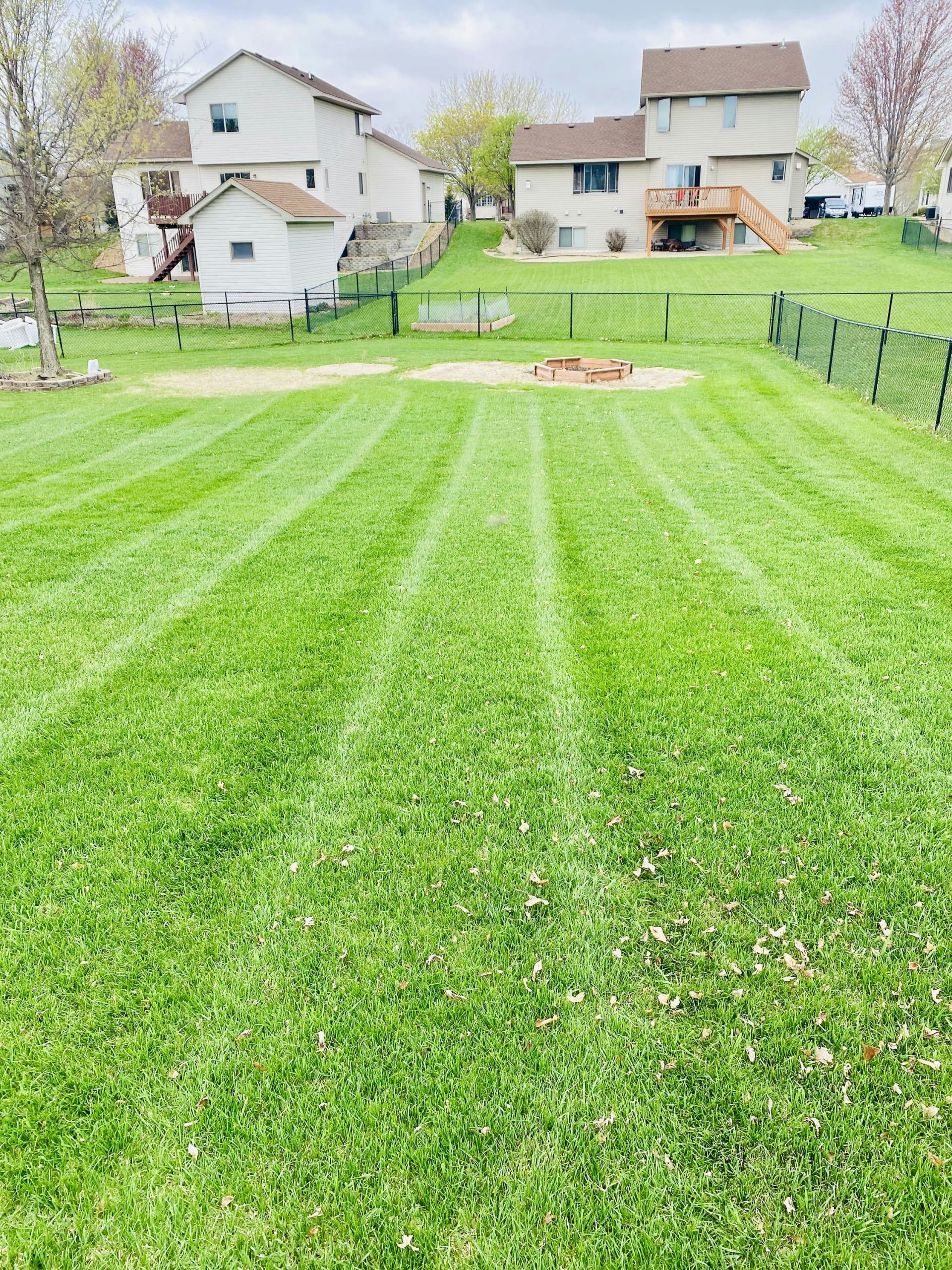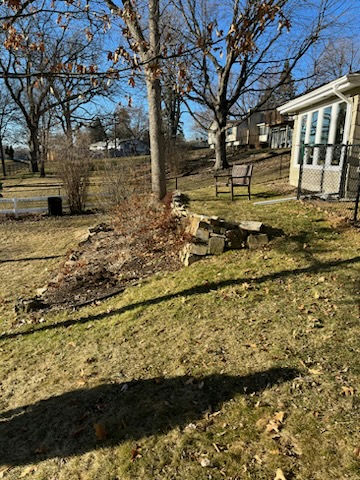Retaining walls are essential elements in modern landscaping, designed to hold back soil and prevent erosion. They serve both functional and aesthetic purposes, transforming sloped areas into usable, attractive spaces. Whether made of concrete, stone, or wood, retaining walls can significantly enhance the beauty and functionality of any outdoor area.
The importance of retaining walls extends beyond their visual appeal. They play a critical role in soil stabilization, preventing landslides and erosion, especially in areas with steep gradients. By creating level areas, they also provide additional space for gardening, seating, or other outdoor activities, effectively increasing the usable space of your property.
In this comprehensive guide, we will delve into everything you need to know about retaining walls. We’ll start by understanding their various types and materials, explore their numerous benefits, and guide you through the planning and building process. Additionally, we’ll share maintenance tips to ensure your retaining wall stands the test of time and creative ideas to integrate them seamlessly into your landscape design. Whether you’re a DIY enthusiast or considering professional help, this guide will equip you with the knowledge to make informed decisions about retaining walls.
Understanding Retaining Walls
Retaining walls are structures designed to restrain soil to unnatural slopes. They are commonly used to bound soils between two different elevations, often in areas of terrain possessing undesirable slopes or in areas where the landscape needs to be shaped severely and engineered for more specific purposes, such as hillside farming or roadway overpasses.
The primary purpose of retaining walls is to prevent soil erosion and provide support for vertical or near-vertical grade changes. They transform sloped, unusable land into functional flat areas, helping to manage water runoff and prevent soil erosion.
Common Materials Used
Retaining walls can be constructed from a variety of materials, each offering unique benefits:
- Concrete: Durable and versatile, concrete can be molded into various shapes and sizes. It offers a sleek, modern look and is excellent for creating strong, long-lasting structures.
- Stone: Natural stone provides a timeless, classic aesthetic. It’s highly durable and blends seamlessly with the natural environment.
- Wood: Wood is a cost-effective and relatively easy material to work with. It offers a warm, rustic appearance but may require more maintenance over time compared to stone or concrete.
- Brick: Brick retaining walls offer a traditional look and are relatively easy to install. They provide good stability and aesthetic appeal.
- Gabion: Gabion walls are made from wire mesh filled with rocks. They are highly durable and offer a rugged, industrial look.
Types of Retaining Walls
There are several types of retaining walls, each designed to meet specific needs and conditions:
- Gravity Walls: These rely on their own weight to hold the soil in place. Made from heavy materials like concrete, stone, or brick, they are suitable for lower walls and can be built without additional reinforcement.
- Cantilevered Walls: These use a reinforced concrete base that extends into the ground and a thinner wall above. The weight of the soil on the base provides stability, making them suitable for higher walls.
- Sheet Piling Walls: Ideal for tight spaces and soft soils, sheet piling walls use steel, vinyl, or wood planks driven vertically into the ground. They are often used in temporary or permanent applications where space is limited.
- Anchored Walls: These walls are reinforced by cables or other stays anchored in the rock or soil behind them. They are used in situations where high loads or large heights are required and provide additional stability and support.
Understanding the various types of retaining walls and the materials used can help you choose the best option for your landscaping needs, ensuring both functionality and aesthetic appeal.
Benefits of Retaining Walls
Erosion Control and Soil Stabilization
One of the primary benefits of retaining walls is their ability to control erosion and stabilize soil. In areas with significant slopes, water runoff can cause soil erosion, leading to landslides and loss of valuable topsoil. Retaining walls provide a barrier that holds back soil, preventing it from washing away during heavy rains. By stabilizing the soil, these walls help maintain the integrity of your landscape and protect against potential damage.
Enhancing the Aesthetic Appeal of a Landscape
Retaining walls are not only functional but also enhance the visual appeal of your outdoor space. They can be designed with various materials, textures, and colors to complement your landscape’s overall aesthetic. Whether you prefer the natural look of stone, the sleek appearance of concrete, or the rustic charm of wood, retaining walls can be customized to match your style. They can also be adorned with plants, lighting, and other decorative elements to create a visually stunning focal point in your garden.
Creating Functional Outdoor Spaces
Retaining walls are excellent for creating functional outdoor spaces. By leveling out steep slopes, they provide flat areas that can be used for a variety of purposes. You can create terraces for gardening, install garden beds, or build seating areas for relaxation and entertainment. These newly created spaces make your landscape more usable and enjoyable, allowing you to maximize your outdoor living area.
Increasing Property Value
Investing in retaining walls can significantly increase the value of your property. Well-designed and properly constructed retaining walls add to the overall appeal and functionality of your landscape, making it more attractive to potential buyers. They demonstrate thoughtful landscaping and a commitment to property maintenance, which can lead to higher appraisals and a better return on investment. Additionally, by preventing erosion and stabilizing soil, retaining walls help maintain the long-term health and value of your property.
Planning Your Retaining Wall
Assessing the Need and Purpose of the Retaining Wall
The first step in planning your retaining wall is to assess the need and purpose it will serve. Are you looking to prevent soil erosion, create a level area for a patio, or enhance the aesthetics of your landscape? Understanding the primary function of your retaining wall will guide the design and construction process. Consider factors such as the slope of your yard, the type of soil, and the specific areas that need support or enhancement.
Evaluating the Site and Soil Conditions
Evaluating the site and soil conditions is crucial for the successful construction of a retaining wall. Different soil types have varying levels of stability and drainage characteristics, which will impact the design of your wall. Conduct a soil test to determine its composition and drainage capabilities. Additionally, assess the topography of the site, including any existing structures, vegetation, and potential water flow patterns. Understanding these factors will help you design a retaining wall that is both functional and durable.
Determining the Height and Length of the Wall
The height and length of your retaining wall are critical factors that influence its design and construction. Higher walls require more robust construction techniques and materials to withstand the pressure exerted by the soil. Determine the height based on the slope you need to retain and the desired appearance of your landscape. The length of the wall will depend on the area you need to cover. It’s essential to ensure that the wall’s dimensions are proportionate to the landscape and meet any local building codes or regulations.
Choosing the Right Materials and Design
Selecting the right materials and design is essential to achieve both the functional and aesthetic goals of your retaining wall. Consider materials that complement your existing landscape and home exterior. Common materials include:
- Concrete: Durable and versatile, suitable for modern designs.
- Stone: Offers a natural, timeless look and excellent durability.
- Wood: Provides a rustic charm but may require more maintenance.
- Brick: Traditional and sturdy, suitable for various design styles.
When designing your retaining wall, consider factors such as drainage, stability, and ease of construction. Ensure that your design includes proper drainage solutions to prevent water buildup behind the wall, which can lead to failure. Reinforce the wall as needed, especially for taller structures, to ensure stability and longevity.
Building Retaining Walls
Step-by-Step Guide to Constructing a Retaining Wall
Building a retaining wall can be a rewarding project that enhances the functionality and beauty of your landscape. Here’s a step-by-step guide to help you through the construction process:
Site Preparation and Excavation
- Mark the Area: Use stakes and string to outline the location of your retaining wall. Ensure the lines are straight and level.
- Excavate the Site: Dig a trench along the marked lines. The trench should be deep enough to accommodate the foundation and at least twice as wide as the planned wall.
- Level the Base: Ensure the bottom of the trench is level. A solid and level base is crucial for the stability of your retaining wall.
Laying the Foundation
- Add Gravel: Pour a layer of gravel into the trench. The gravel provides a stable base and improves drainage. Compact the gravel using a tamper.
- Place the First Course: Begin laying the first row of blocks or stones. Ensure each piece is level from front to back and side to side. This foundational course is critical for the stability of the entire wall.
Constructing the Wall
- Stacking Blocks or Stones: Continue laying subsequent rows. Stagger the joints, much like building a brick wall, to enhance stability. For blocks, use the appropriate adhesive or connectors as recommended by the manufacturer.
- Pouring Concrete: If you are using concrete, pour it in sections, allowing time for each section to set before moving on. Use forms to shape the wall and ensure even thickness and height.
Ensuring Proper Drainage and Backfilling
- Install Drainage Pipes: Lay perforated drainage pipes at the base of the wall to direct water away from the structure. Proper drainage prevents water pressure buildup behind the wall.
- Backfill with Gravel: As you build the wall, backfill the space behind it with gravel. This material allows water to flow freely to the drainage pipes, reducing pressure on the wall.
- Add Filter Fabric: Place filter fabric over the gravel before adding soil to prevent the soil from clogging the drainage system.
Safety Tips and Common Mistakes to Avoid
- Wear Safety Gear: Always wear gloves, safety goggles, and sturdy footwear to protect yourself during construction.
- Avoid Overloading: Don’t exceed the recommended height for your wall materials. Taller walls require professional engineering and reinforcement.
- Ensure Proper Drainage: Failing to include adequate drainage is a common mistake that can lead to wall failure. Always incorporate drainage solutions.
- Check Local Regulations: Some areas require permits for retaining walls above a certain height. Check local building codes and obtain necessary permits before starting construction.
- Reinforce as Needed: For higher walls or those under significant pressure, consider additional reinforcement such as geogrid or tie-backs.
By following these steps and adhering to safety guidelines, you can successfully construct a durable and attractive retaining wall that enhances your landscape’s functionality and aesthetics.
Maintaining Your Retaining Wall
Routine Inspection and Maintenance Tips
Regular maintenance of your retaining wall ensures its longevity and structural integrity. Here are some routine inspection and maintenance tips to keep your wall in top condition:
- Visual Inspections: Conduct visual inspections at least twice a year, especially after heavy rains or storms. Look for signs of damage, such as cracks, bulges, or shifts in the wall.
- Check for Erosion: Examine the base of the wall for signs of erosion. If you notice soil washing away, add more gravel or soil as needed to stabilize the area.
- Remove Debris: Keep the area around the wall clear of debris, such as leaves and branches, which can trap moisture and cause damage over time.
- Inspect Drainage Systems: Ensure that drainage pipes and weep holes are clear of obstructions. Blocked drainage can lead to water buildup and increased pressure on the wall.
Addressing Common Issues
- Cracks: Small cracks can develop over time due to natural settling or slight shifts in the ground. For minor cracks, use a masonry sealant to prevent water infiltration. For larger cracks, consider consulting a professional to assess the structural integrity of the wall.
- Bulges: Bulges in the wall indicate that the wall is under excessive pressure, often due to inadequate drainage. Address the drainage issue first by clearing blocked pipes or installing additional drainage. You may need to dismantle and rebuild the affected section to restore stability.
- Water Damage: Water stains or efflorescence (white, powdery residue) on the wall surface are signs of water damage. Improve drainage and consider applying a waterproof sealant to the wall surface to protect against further damage.
Long-Term Care and Longevity
- Regular Maintenance: Continue with routine inspections and maintenance to catch and address issues early. Consistent care extends the life of your retaining wall.
- Reinforcement: Over time, the ground behind the wall may shift, requiring additional reinforcement. Consider adding tie-backs, anchors, or geogrid to enhance stability.
- Professional Inspections: For larger or more complex retaining walls, schedule professional inspections every few years. Experts can identify potential problems that may not be visible during routine checks.
By adhering to these maintenance practices, you can ensure that your retaining wall remains a durable and functional part of your landscape for many years. Proper care not only preserves the wall’s structural integrity but also maintains its aesthetic appeal, enhancing the overall value and beauty of your property.
Final Thoughts
As we’ve explored, retaining walls offer numerous benefits, from controlling erosion and stabilizing soil to enhancing the aesthetic appeal of your landscape and creating functional outdoor spaces. Understanding the types of retaining walls and their materials, planning meticulously, constructing with care, and maintaining regularly will ensure that your retaining wall serves its purpose and remains a beautiful addition to your property.
Now is the perfect time to start planning and building your retaining wall. Whether you’re looking to create a stunning garden feature, prevent soil erosion, or add value to your property, a well-designed and constructed retaining wall can make a significant difference.
For those who need expert assistance or prefer to have professionals handle the project, Peter Doran Lawn and Landscaping is here to help. Our team of experienced landscapers can provide you with the advice, design, and construction services you need to bring your vision to life. Contact us today for a consultation and let us help you transform your landscape with a beautiful, functional retaining wall.



